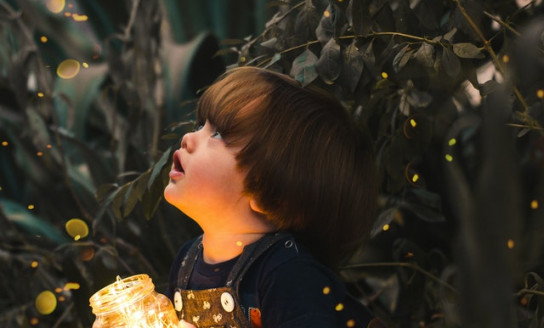About toddler communication
Children learn by listening and watching you talk. There’s lots of opportunities to communicate with your toddler during the day - speak, sing, and read to your child in the languages spoken at home.
Children have the capacity to learn lots of different languages, and the earlier they hear these languages the easier it is to learn. Language also helps tamariki learn about their culture(s).
At a year old, your child might be saying simple words like mama and dada, cat, and/or dog. Toddler development is completely individual, and they may learn to speak earlier or later than other toddlers.
Toddler language development really takes off between the ages of one and two – they quickly move from saying a couple of words to saying several words and starting to join them together. Their understanding of language is also growing – they’re starting to understand simple requests like “go and get teddy” or “wave goodbye to nana!”
As the number of words they use explodes, so can their frustration as they struggle to make themselves understood or to find the right words to let you know what they want.
At this age they don’t have the words to express big emotions they’re feeling – like frustration – and that can lead to tantrums. You can often help them with that by keeping calm (taking deep breaths can help), being patient with them when their emotions explode, and by helping them name their emotions.
Body language is still an important communication tool for toddlers. They might point at something so you can get it for them, tug on your pants or raise their arms for you to pick them up, or shake their head when they don’t want something. These times are a great opportunity for you to encourage your toddler to use words, and to show them how.
Download this great booklet from La Trobe University and Health Victoria about all the things you can do to help your child's communication skills.
Helping children understand words
It’s easy to forget that a toddler can’t understand everything we say or ask them to do.
You can help by:
- using simple words and phrases to help them understand
- remember your child is just little, and there are still a lot of words (and other things) they don’t understand. Use simple words and phrases to help them understand
- rephrasing what you’ve said if they seem confused or don’t understand what you want them to do. For example, if they don’t understand when you ask them to “please put your toys away in the toy basket”, try “this is the toy basket, please put your toys in it.” You might have to show them what you mean
- listen to them when they try to communicate with you, and try to interpret their meaning. Knowing you’ll listen to them when they talk to you builds great foundation for your relationship with them as they grow, and it encourages them to listen too
- focus on their body language as well as their words to help you understand what they’re saying
- keeping your words consistent. They’ll learn quicker if you always call what they wear to bed their pyjamas, not “PJs” or “jimjams”, for example
- using a tone of voice to help your toddler understand the meaning of what you say
- singing songs or saying rhymes to help them understand different word sounds – this is fun too!
- being a good role model for conversation and communication. Your toddler learns how to communicate by watching and listening to you. How you communicate with others will affect how they communicate with other adults and children.
Read more about communication development (PDF)
Teaching children about conversation
Talking with your toddler is a two-way interaction. Use natural pauses to wait for their response – this will teach them about taking turns when speaking.
This technique is called “serve and return” – listen when your toddler ‘serves’ a word or words to you, ‘return’ it with words or actions, wait for their response or ‘return’, and then keep it going. This helps their brain development, and helps them learn about language, communication and social skills.
By age two
Sometime around this age, toddlers start to make simple sentences, often with gestures, like “me play”, “dog woof”, “come here”.
Show them how words go together to make full sentences – “you want to play?” “that’s right, the dog says woof,” and “you want Daddy to come here?”
Repeat words back to them when they use words the wrong way or use made up words. If your child said “I holded the cat”, for example, you could repeat it back with the correct word - “you held the cat – was it soft?”
Children learn best when they’re interested in something, so talk to them and ask questions about those things – “Yes, that’s a fire engine! What noise does it make?” “That’s a lovely dog – what does a dog say?”
By age two, most children:
- understand instructions with two key words - “give your plate to Daddy”
- can listen to a simple story
- use over 50 single words
- are starting to combine words - “go car”, “more water”
- ask simple questions – “where teddy?” “go now?”
- talk about what they can see and hear right now
- enjoy pretend play with their toys, like feeding teddy
- join in with songs/waiata and nursery rhymes/oriori with actions
- enjoy interactive books, like lift-the-flap books
- can be understood by familiar adults most of the time.
Read more about language development from 1-2 years
